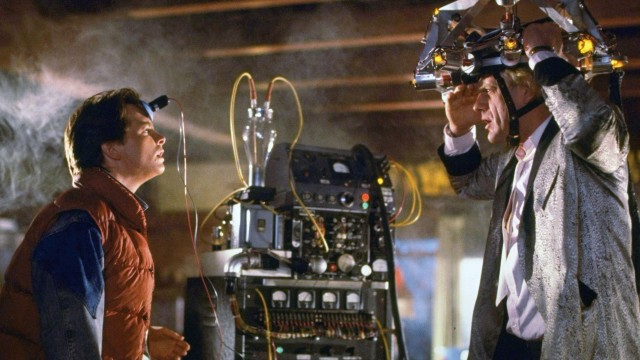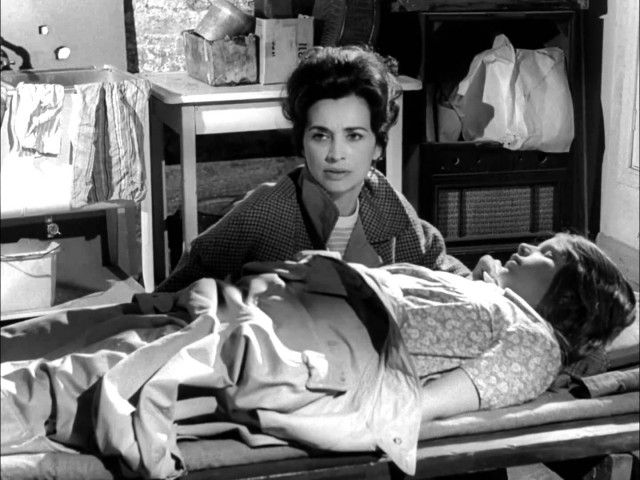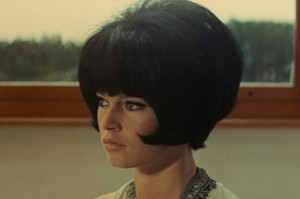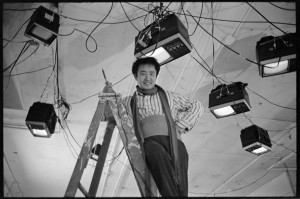The Ultimate Test: Blade Runner & Voight-Kampff Cinema

What would happen if Blade Runner’s Voight-Kampff test – a polygraph-like machine used to determine its subject’s humanity – was applied to the cinematic form itself? Nik Glover dons his best Deckard trench coat and investigates…
Last week, Denis Villeneuve’s Blade Runner 2049 was released in UK cinemas. Picking up 30 years after the events of the first film, it promises a world-building development on the grand theme of its predecessor: the relationship between man and machine.
Ridley Scott’s 1982 masterpiece Blade Runner, adapted from Philip K Dick’s Do Androids Dream of Electric Sheep?, introduced the first filmic representation of Dick’s Voight-Kampff test (Voigt-Kampff in the book). Voight-Kampff is a test – designed by humans – to determine whether a subject is able to experience human emotional responses (if not, it is likely to be a Replicant). It is a kind of machine-aided examination of emotional maturity.
The examiner walks through scenarios, asking the subject to place themselves in the role of actor and to respond to set questions. Reaction time, capillary dilation, and the presence of invisible, airborne particles are all measured. By this method, the Voight-Kampff examiner seeks to interrogate whether the subject’s response represents a “human” reaction to a given situation.
But what would happen if the test was applied to the cinematic form itself? Could cinema as a medium be demonstrated to be human? Or is it, like so much we construct from given ingredients, a mechanical process with only the appearance of life?
Firstly, to state the obvious: cinema as an art form is different to other art forms. Theatre is a series of performances, relying on training and precision to situate the audience in a new reality. Every show is different, in the sense that it is always experienced “now”, regardless of setting. Tiny differences, the result of the passage of time and the inherent movement of society, make it impossible to experience, say, a theatrical performance from the London of 1599 (Shakespeare In Love, 1998) without it actually becoming a comment on the Hollywood of now. The world has moved on; the buildings have shifted a little, they lie higher on the land. Stage actors age and die, their struggles are themselves miniature romances of entropy (Birdman, 2014). Theatre would have to take and retake the test day after day, year after year. You couldn’t run an investigation that way.

If theatre fails the test, what about painting and sculpture? More fixed mediums – portraits, woodcarvings, landscapes – capture a moment in time. The story of the creation of a single work of art (The Horse’s Mouth, 1958) is itself a true piece of cinema, having a defined chronology as well as set actors, locations and materials. The piece may be expanded upon in different forms, but each work retains a sense of distinction. Human matter may even be woven into the texture of a work (Damned in the USA, 1992) used to symbolically drown a deity. The body itself can become the canvas.
When we look at a photograph, we experience time, and we certainly experience life. But it could be argued that photographs, painting or sculptures, while most fully capturing the aspect of a human in the moment, while able to be experienced in time, and undoubtedly, as all art, indelibly about time, are not in themselves representative of the passage of time. Photographs may change in our consciousness, shifting meaning and commenting on the destruction or flowering of the subject (Back to the Future, 1985, pictured above), but they do not themselves move through different moments. The Voight-Kampff would give a set reading for each work of art, and the reading would never change. The test would work.
What are the constituent elements of the test that cinema, then, must display? Firstly, every scenario requires a location; a burning desert, with the implicit suggestion of holy judgement (Near Dark, 1987), the countryside around a suburban neighbourhood in Summer (Stand By Me, 1986), a matriarchal coastal society housed in a weird, airless asylum (Evolution, 2015). The interviewer needs always to be able to situate, even if the story is not really about the location. But when is a story ever not about its location?
This location, or series of locations, needs either a single character, concurrently shaped by, shaping and in thrall to its settings (Wall-E, 2008) or a whole community with attendant connections, prejudices and histories (Nashville, 1975). The location can distort and destroy its residents (The Mist, 2007), or drive, inspire and inform their actions. Often it does both.

Across the desert walks the turtle; but the turtle is not the subject of our test. The turtle is a plot point, a cipher used to study the reaction of the true subject, the man or machine that is being tested. The turtle could be a plague (Night of the Living Dead, 1968, pictured above), a sudden asteroid strike (The War of the Worlds, 1953), the discovery of a cache of something highly desirable (Whiskey Galore, 1949) or, on too many occasions to name, a secret love affair. Through the medium of this turtle, our subject is tested, and their reactions observed.
The subject is two-fold. Certainly, the main character is subject. Every narrator, hero or inspector in some way stands in for the audience. It is hard to find any hero or anti-hero that does not display elements of behaviour that could be considered sympathetic. Even the most objectionable of central characters (Filth, 2013) has to undertake some journey or other towards a higher plain of consciousness – even if the efficacy of the journey is, in the end, undermined. The most emotionless hero would still pass the Voight-Kampff; or so we’re led to believe. The second subject-aspect is provided by the audience themselves. No work of art can be considered without reference to its audience. The audience has as much impact on the work as vice-versa. And an audience is always human. So in a sense, it is always the audience sitting in the place of the interviewer – with the movie the test subject.
But the audience doesn’t always appear to desire Voight-Kampff cinema. The ultimate test of whether Villeneuve’s Blade Runner can reach, or even surpass, the Scott original will be whether it is able to break out of the inhuman spiral of recent franchise cinema like Terminator: Genisys (2015) and Alien: Covenant (2016) and deliver a living, breathing organism, and not just a skin-job. Villeneuve has built a reputation as a director who can marry believable, sympathetic characters with grand themes. The Poeesque Enemy (2013) is his most surreal mainstream work, but is still anchored by a relatable performance by Jake Gyllenhaal. His last foray into science fiction was the acclaimed Arrival (2016). If anyone can find the humanity inside the prosthesis, perhaps he can.
Nik Glover
See Blade Runner 2049 for yourself at cinemas nationwide
Images, from top: Stills from Blade Runner, 1982; Night of the Living Dead, 1968; Back to the Future, 1985





